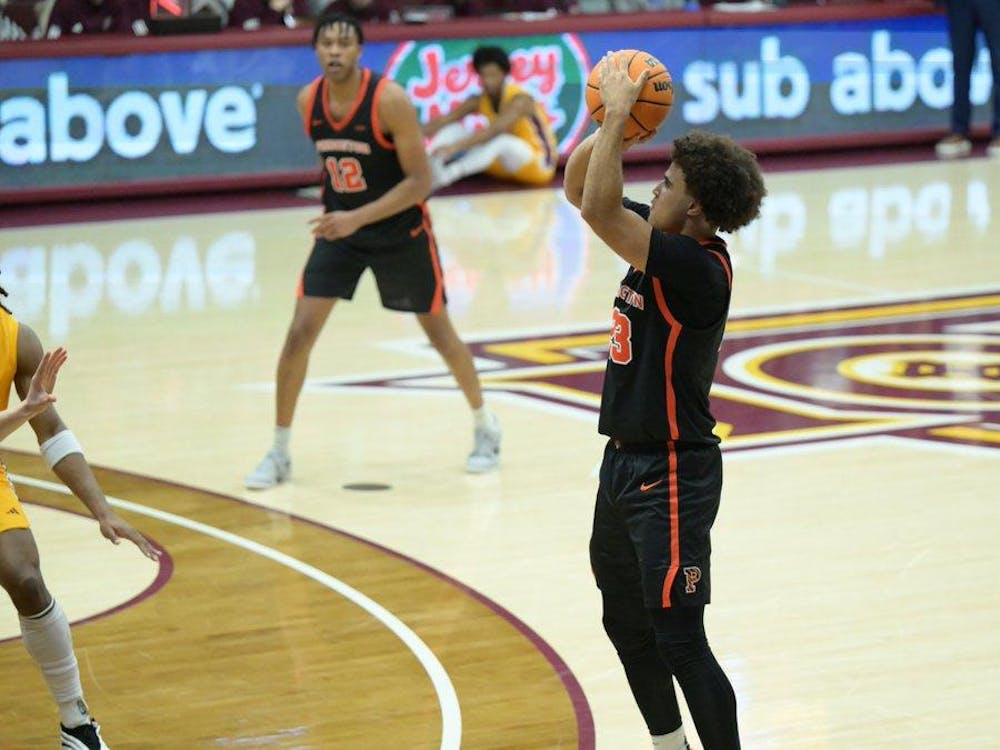On Feb. 17, the Princeton Garden Theatre showed “In the Mood for Love” as part of the “Deep Focus” seminar series. The film from 2000, which was written, directed, and produced by Hong Kong filmmaker Wong Kar-wai, depicts two neighbors, Chow Mo-wan (Tony Leung) and Su Li-zhen (Maggie Cheung), who discover that their spouses are having an affair.
The “Deep Focus” series brings discussions of classic films with eminent scholars and film professionals to the Princeton community. “In the Mood for Love” is part of the Asian American Film sub-series of “Deep Focus,” and this seminar was hosted by Professor Erin Y. Huang from the comparative literature and East Asian studies department.
From the beginning, I was struck by the film’s unique progression: it’s shot in a number of vignettes separated by quick fades. Time passes, but indistinctly. The protagonists move from short, banal interactions almost unnoticeably into friendship, camaraderie, artistic partnership, and even love. We track the characters through their individual lives — mostly boring jobs between walking in and out of the apartment block. But, as their relationship intensifies, we often see them together.
Additionally, Wong's camera obsesses over inanimate objects: they obstruct and frame the action of the scene. Often, the camera focuses on something in the foreground, leaving the audience to look past it to see the characters beyond it. Wong uses mirrors and curtains to great effect. Visually, Wong often leaves out important characters. Chow’s wife is only seen from a distance; Su’s husband isn’t seen at all, only heard. By the end, both have nearly disappeared from the plot.
Repetitions carry us through the film. Again and again, we see the apartments. A clock. A declined invitation. A chance meeting up and down a staircase. There are several musical cues that repeat again and again, over actions in slow motion, marking significant development in the plot. Other than this, the film lacks an atmospheric score. Most dialogue, especially in the beginning, is empty small talk — the characters and the audience try to see through it to something real.
In the background, it's always raining. It's always smoky. It's almost always night. The use of red, yellow, and green, dimness, and dinginess make the heat and closeness of the scenes palpable — it takes a special kind of film to transport its audience so fully into a location and into a time.
Towards the end of the film, the time and location shift from the Hong Kong of the 60s, to Singapore, back to Hong Kong, three years later. Nothing has changed except the people, for whom everything has changed. The final scenes of the film transport us to the past in a way that I can't spoil and won't forget.
The film also sets up a very palpable wall between the characters and our audience. One trait the protagonists share is their love for making art. Despite the passion the characters feel toward one another or toward their creations, Wong shoots these scenes just as he shoots everything else. This leaves a distance between the characters and viewers. It's up to the actors, even more than usual with the lack of a score, to bring us to where they are — and they are entirely up to the task.
Tony Leung and Maggie Cheung are the best part of the film; their performances are translucent. It's cliché to say that they become their characters, but they do. And then they take it a step further: sometimes, it's impossible to know in some scenes whether the characters themselves are acting.
After the final frames of the film, the audience — more crowded than you might expect for a 20-year-old film on a Thursday — began applauding. Outside the theater, it was raining: a bit of the film had come to us.
Daniel Viorica is a Staff Writer for the Prospect at the ‘Prince.’ He can be reached at viorica@princeton.edu.









